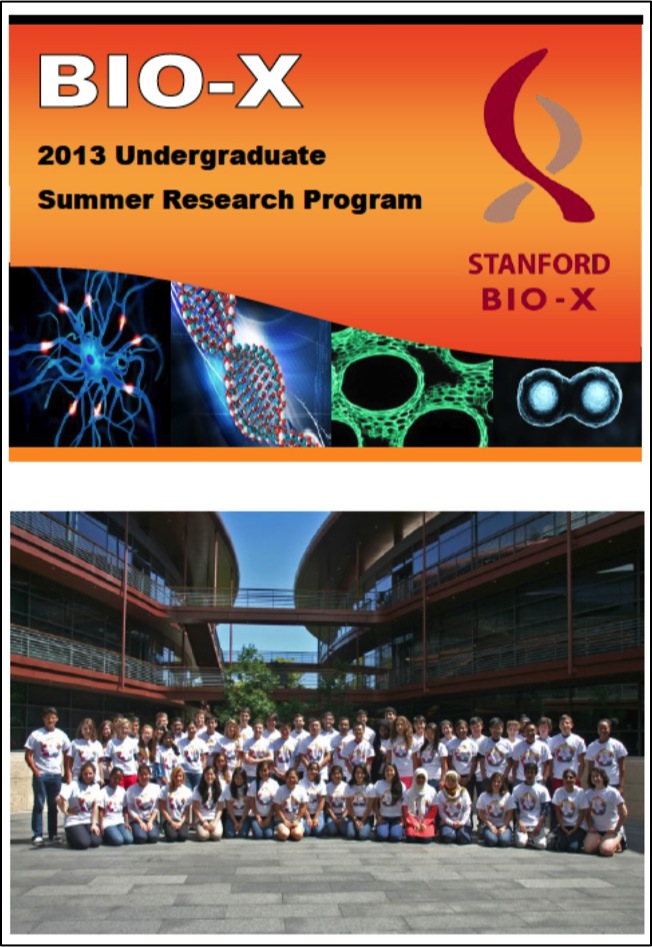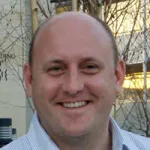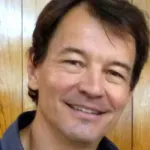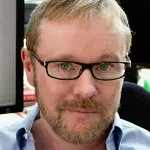
Welcome to the biweekly electronic newsletter from Stanford Bio-X for members of the Bio-X Corporate Forum. Please contact Dr. Hanwei Li, the Bio-X Corporate Forum Liaison if you would like to be added or removed from this distribution list, or if you have any questions about Stanford Bio-X or Stanford University.
Highlights
** On October 9, 2013, Bio-X celebrated the 10th Anniversary of the James H. Clark Center, the hub of Bio-X. Check out CLARK CENTER @ 10X as well as the Bio-X Timeline over the last 15 years!!
** Check out the article by Stanford President John Hennessy in the Nov/Dec 2013 issue of the Stanford Magazine on Bio-X and the Clark Center, "A Cauldron of Innovation".
Seed Grants
**UPDATE: BIO-X HAS JUST ANNOUNCED ITS 22 NEWLY AWARDED IIP SEED GRANT PROJECTS OF ROUND 7!! Click on the link to check out the project descriptions and read on to learn more about this round!
 SEED GRANTS FOR SUCCESS - Stanford Bio-X Interdisciplinary Initiatives Program (IIP)
SEED GRANTS FOR SUCCESS - Stanford Bio-X Interdisciplinary Initiatives Program (IIP)
The Bio-X Interdisciplinary Initiatives Program represents a key Stanford Initiative to address challenges in human health. The IIP awards approximately $3 million every other year in the form of two-year grants averaging about $150,000 each. From its inception in 2000 through the fifth round in 2010, the program has provided critical early-stage funding to 114 different interdisciplinary projects, involving collaborations from over 300 faculty members, and creating over 450 teams from five different Stanford schools. From just the first 5 rounds, the IIP awards have resulted in a 10-fold-plus return on investment, as well as hundreds of publications, dozens of patents filed, and most importantly, the acceleration of scientific discovery and innovation.
This year is the 7th round of the Bio-X IIP Seed Grants Program, and Bio-X has just announced it's 22 newly awarded projects selected from 142 Letters of Intent (LOIs)! This has been the largest number of LOIs that Bio-X has received. Please go here to check out the newly awarded projects. Competition was intense, and the selection criteria included innovation, high-reward, and new interdisciplinary collaborations. (To view the 142 other IIP projects that have been funded from the previous 6 rounds, please click here.)
We are cultivating and are highly successful in building meaningful collaborations with numerous corporate colleagues. New collaborations through our seed grant projects are highly encouraged. To learn about how to get involved, please contact Dr. Hanwei Li or Dr. Heideh Fattaey.
**On August 27, 2014, over 300 people attended Bio-X's latest Interdisciplinary Initiatives Seed Grants Program Symposium. There were 8 different oral presentations from faculty members who were awarded Bio-X Seed Grants on the progress that they have made with the funding towards their projects. In addition, Bio-X had its largest poster session ever with 167 posters presented during the reception of the symposium! If you'd like to learn more about any of the projects that were presented during the entire symposium, please contact Dr. Hanwei Li with your questions.
Fellowships
Every year, graduate students and postdoctoral scholars of Bio-X affiliated faculty are highly encouraged to apply for the Bio-X Fellowships, which are awarded to research projects that are interdisciplinary and utilize the technologies of different fields to solve different biological questions. Students are encouraged to work collaboratively with professors of different departments, thus creating cross-disciplinary relationships among the different Stanford schools. Our fellows have conducted exciting research, resulting in publications in high-impact journals and have been offered excellent positions in industry and academia.
To date, with the 19 new awardees of 2014, Stanford Bio-X has a total of 173 Fellows.
You can view the numerous Fellowship projects that have been awarded over the years as well as oral presentations from previous symposiums here.
 BIO-X UNDERGRADUATE SUMMER RESEARCH PROGRAM
BIO-X UNDERGRADUATE SUMMER RESEARCH PROGRAM
The Bio-X Undergraduate Summer Research Program supports undergraduate research training through an award designed to support interdisciplinary undergraduate summer research projects. The program is an invaluable opportunity for students to conduct hands-on research, learn how to carry out experiments in the laboratory, and develop the skills to read and analyze scientific literature. This program is eligible to Stanford students who want to work in the labs of Bio-X affiliated faculty.
To date, with 65 new awardees from 154 applications submitted this year, 306 students have been awarded the opportunity to participate in the Bio-X Undergraduate Summer Research Program.
Participating undergraduates are also required to present poster presentations on the research that they've conducted during the program. Please click here for title lists of past posters that our undergraduates have presented.
Many fruitful collaborations and relationships have been established with industry through fellowships. Please contact Dr. Hanwei Li or Dr. Heideh Fattaey if you'd like to learn more about how to get involved with these fellowship programs.
News

Gel-like padding being developed by a Stanford Bio-X team could help cells survive injection and heal spinal cord injuries
Bio-X Affiliated Faculty Sarah Heilshorn, Giles Plant, and Andrew Spakowitz
Bio-X 2014 IIP Seed Grant Awarded Project
It is a turbulent and sometimes deadly life for cells injected to heal injuries. The act of being squirted through a thin needle into the site of an injury jostles the delicate cells against each other and against the needle walls. Then, once in the site of injury, they face a biological war zone of chemicals. It's no wonder, then, that treating spinal cord injuries and other damage with injected cells has been a challenge. Solving this problem takes more than biological know-how; it takes padding – chemical padding in the form of complex molecules called polymers that bathe and protect the cells but also flow smoothly through thin needles. Sarah Heilshorn, an associate professor of materials science and engineering at Stanford, equates these gel-like polymers to ketchup. It's pretty thick, but when you bang on the bottle the sauce flows smoothly through the neck, then firms back up on the plate – a process she calls self-healing. "We want our polymers to self-heal better than ketchup," she said. "It flows a bit across the plate." Her goal is to develop a polymer that supports the cells when they are loaded in a syringe, but then flows freely through the needle, padding and protecting the cells, then firming up quickly when it reaches the site of injury. "We don't want the cells to flow away," she says. Heilshorn sees this technology as a platform that could be applied to a variety of cell types and injuries. Some polymers need to be firmer to support cells that like a harder environment. Others need to be softer, or contain different biochemical signals.
![]() Stanford researchers create 'evolved' protein that may stop cancer from spreading
Stanford researchers create 'evolved' protein that may stop cancer from spreading
Bio-X Affiliated Faculty Jennifer Cochran and Radiation Oncology Faculty Amato Giaccia
Bio-X 2010 IIP Seed Grant Project
Bio-X Fellow Mihalis Kariolis
A team of Stanford researchers has developed a protein therapy that disrupts the process that causes cancer cells to break away from original tumor sites, travel through the bloodstream and start aggressive new growths elsewhere in the body. This process, known as metastasis, can cause cancer to spread with deadly effect. "The majority of patients who succumb to cancer fall prey to metastatic forms of the disease," said Jennifer Cochran, an associate professor of bioengineering. A paper describing the research was published online Sept. 21 in Nature Chemical Biology. Cochran and Amato Giaccia, professor of radiation oncology, share senior authorship of the paper. The lead author is Mihalis Kariolis, a former Bio-X graduate fellow who is now a postdoctoral scholar in Giaccia's lab. Today doctors try to slow or stop metastasis with chemotherapy, but these treatments are unfortunately not very effective and have severe side effects. The Stanford team seeks to stop metastasis, without side effects, by preventing two proteins – Axl and Gas6 – from interacting to initiate the spread of cancer.

 Immune activity shortly after surgery holds big clue to recovery rate, Stanford team finds
Immune activity shortly after surgery holds big clue to recovery rate, Stanford team finds
Bio-X Affiliated Faculty Martin Angst and Garry Nolan
The millions of people who undergo major surgery each year have no way of knowing how long it will take them to recover from the operation. Some will feel better within days. For others, it will take a month or more. Right now, doctors can’t tell individual patients which category they’ll fit into. Now, researchers at the Stanford University School of Medicine have discovered that the activity level of a small set of immune cells during the first 24 hours after surgery provides strong clues to how quickly patients will bounce back from surgery-induced fatigue and pain, and be back on their feet again. The finding, based on an in-depth analysis of blood samples drawn from middle-aged to older patients undergoing a hip-replacement procedure, is described in a study published Sept. 24 in Science Translational Medicine. The study may be the most comprehensive characterization to date of the immune system’s response to trauma. The Stanford researchers were able to make this discovery because they used a highly sensitive technology called single-cell mass cytometry. Developed in the laboratory of microbiology and immunology professor Garry Nolan, PhD, the method enables simultaneous monitoring of large numbers of biochemical features both on the surfaces of immune cells and within the cells, telling the scientists not only what kind of cells they are looking at but how active they are. “We learned that within the first 24 hours after surgery you can find strong clues in blood that reveal what shape a particular patient is going to be in two weeks later,” said Martin Angst, MD, professor of anesthesiology, pain and perioperative medicine, who shared senior co-authorship of the study with Nolan.
Scientists use stem cells to learn how common mutation in Asians affect heart health
Bio-X Affiliated Faculty Joseph Wu and Daria Mochly-Rosen
Over 500 million people worldwide carry a genetic mutation that disables a common metabolic protein called ALDH2. The mutation, which predominantly occurs in people of East Asian descent, leads to an increased risk of heart disease and poorer outcomes after a heart attack. It also causes facial flushing when carriers drink alcohol. Now researchers at the Stanford University School of Medicine have learned for the first time specifically how the mutation affects heart health. They did so by comparing heart muscle cells made from induced pluripotent stem cells, or iPS cells, from people with the mutation versus those without the mutation. IPS cells are created in the laboratory from specialized adult cells like skin. They are “pluripotent,” meaning they can be coaxed to become any cell in the body. “This study is one of the first to show that we can use iPS cells to study ethnic-specific differences among populations,” said Joseph Wu, MD, PhD, director of the Stanford Cardiovascular Institute and professor of cardiovascular medicine and of radiology. “These findings may help us discover new therapeutic paths for heart disease for carriers of this mutation,” said Wu. “In the future, I believe we will have banks of iPS cells generated from many different ethnic groups. Drug companies or clinicians can then compare how members of different ethnic groups respond to drugs or diseases, or study how one group might differ from another, or tailor specific drugs to fit particular groups.” The findings are described in a paper published Sept. 24 in Science Translational Medicine. Wu and Daria Mochly-Rosen, PhD, professor of chemical and systems biology, are co-senior authors of the paper, and postdoctoral scholar Antje Ebert, PhD, is the lead author.
Events
| Bio-X October 2, 2014, 12 pm - 1 pm Clark Center S360, Stanford, CA Bio-X Frontiers in Interdisciplinary Biosciences Seminar: "Sarcomere Level Function in Human Heart Failure" Speaker: Kenneth Campbell, University of Kentucky |
Molecular Imaging Program at Stanford (MIPS) Oct 9, 2014, 5:30 pm - 6:30 pm Beckman Building, Munzer Auditorium, Stanford, CA CCNE Nano-Bio Seminar Series: Characterizing circulating tumor cells: Insights into Cancer Metastasis Speaker: Min Yu, PhD, USC |
| BIO-X SYMPOSIUM - MECHANOBIOLOGY: PUSHING AND PULLING ON LIFE Thursday, November 6, 2014 Clark Center Auditorium This Symposium aims to educate students, postdoctoral fellows and established scientists from different disciplines about Mechanobiology by presenting talks on sensory systems, mechanically mediated cellular signaling, and the role of mechanics in homeostasis. Topics include mechanisms, methods and mechanical pathways ranging in temporal and spatial scales from ion channels and protein conformational changes to cell and tissue mechanics in growth, differentiation, disease and regeneration. The Symposium features invited speakers, talks from postdoctoral fellows selected from submitted abstracts, a networking lunch, and poster reception. 9:00am Welcome and Introduction 9:15am Chemomechanical Markers and Modulators of Stem Cells: Pulling It All Together Krystyn Van Vliet, Massachusetts Institute of Technology 10:00am Chromosome Segregation: Mechanical Integrity with Dynamic Parts Sophie Dumont, University of California, San Francisco 10:45am Coffee Break 11:15am Postdoctoral Fellows Talks 12:30pm Lunch - Students may register in advance for lunch with faculty 1:45pm Touch As a Matter of Fat and Mechanics Miriam Goodman, Stanford University 2:30pm A Leaky Pipeline: Matrix Mechanics in Vascular Form and Function Cindy Reinhart-King, Cornell University 3:15pm Coffee Break 3:45pm Mechanical Regulation of Cell Adhesion and Migration Margaret Gardel, The University of Chicago 4:30pm-6:00pm Poster Session and Refreshments Symposium Organizers: Beth Pruitt (ME, MCP by courtesy, Bio-X) and W. James Nelson (Biology, MCP, Bio-X) To RSVP, please go here |
Resources
| Stanford University |
| Stanford Bio-X |
| Bio-X Seed Grants The Stanford Bio-X Interdisciplinary Initiatives Program (IIP) provides seed funding for high-risk, high-reward, collaborative projects across the university, and have been highly successful in fostering transformative research. |
| Office of Technology and Licensing "Techfinder" Search the OTL Technology Portal to find technologies available for licensing from Stanford. |
| Stanford Center for Professional Development - Take advantage of your FREE membership! - Take online graduate courses in engineering, leadership and management, bioscience, and more. - Register for free webinars and seminars, and gets discounts on courses. |
| Stanford Biodesign Video Tutorials on how FDA approves medical devices A series of video briefs recently produced by the Stanford Biodesign Program teaches innovators how to get a medical device approved for use in the United States. This free, online library of 60 videos provides detailed information on the Food and Drug Administration regulatory process, short case studies and advice on interacting with the FDA. |
To learn more about Stanford Bio-X or Stanford University, please contact Dr. Hanwei Li, the Bio-X Corporate Forum Liaison, at 650-725-1523 or lhanwei1@stanford.edu, or Dr. Heideh Fattaey, the Executive Director of Bio-X Operations and Programs, at 650-799-1608 or hfattaey@stanford.edu.


